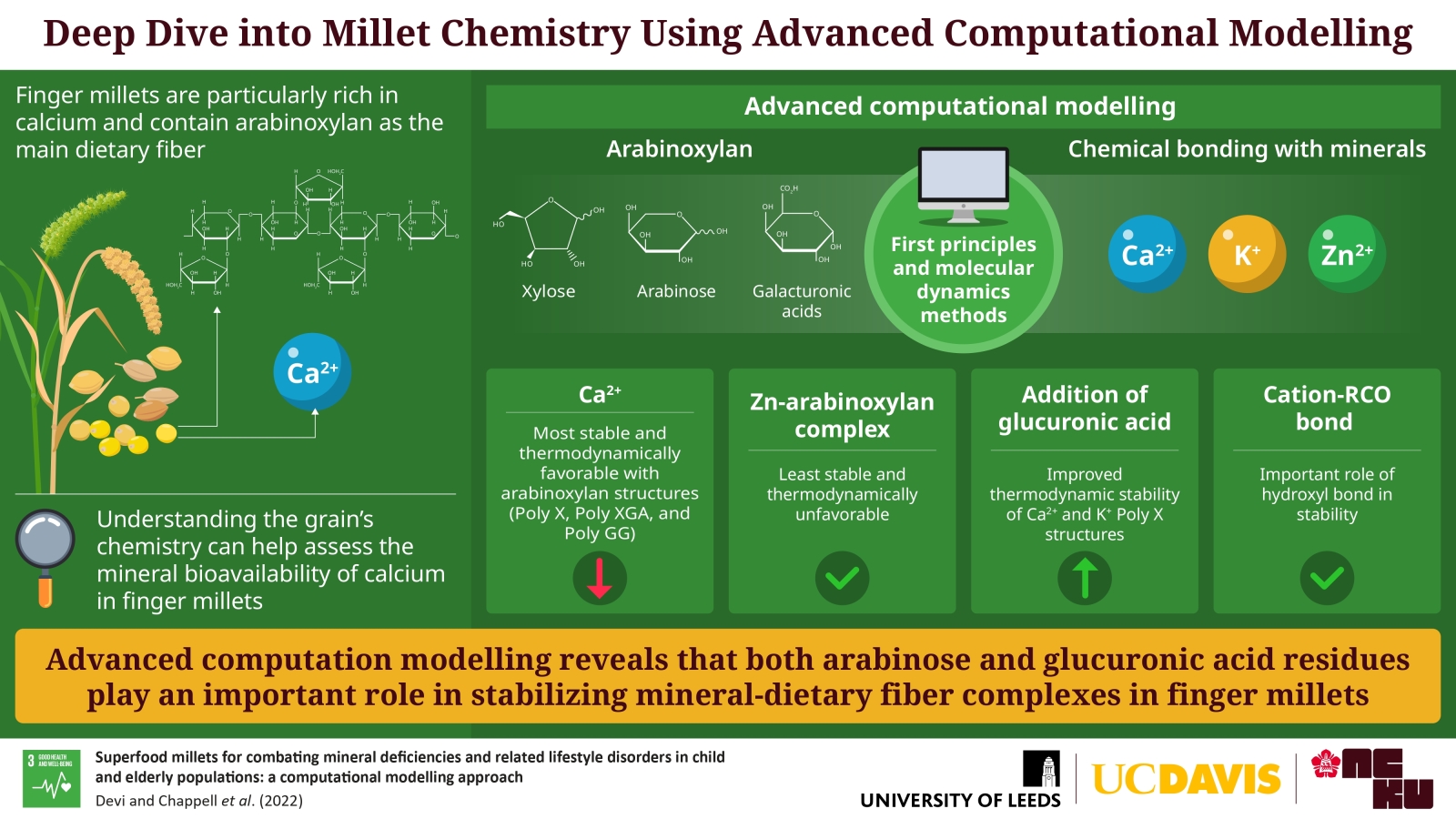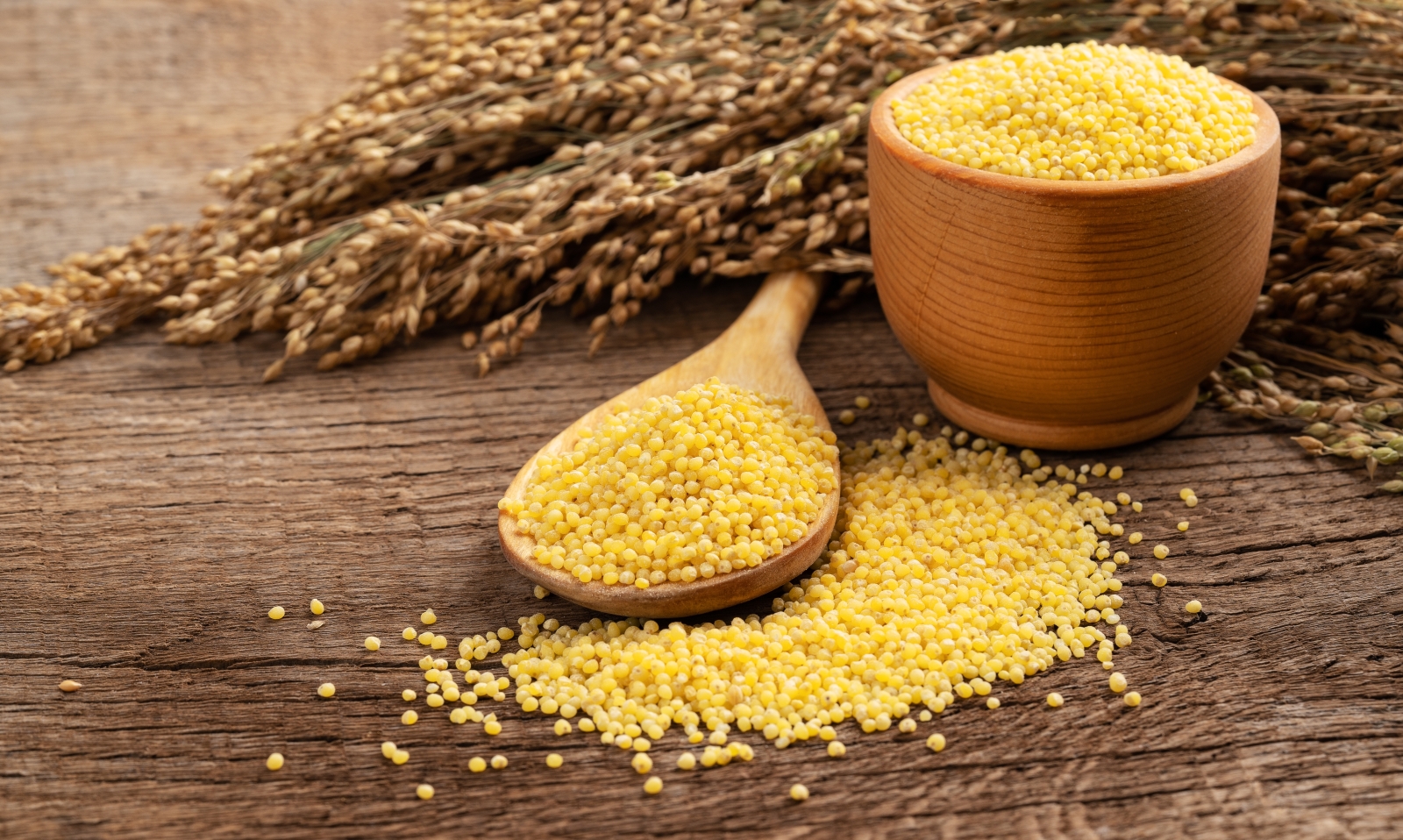


Minerals in Millets: Could Abundant Dietary Fibre Undercut the Benefits of their Consumption?
The stability of the mineral-fibre complexes offers clues regarding bioavailability of minerals derived from millets
Millets are rich in minerals, such as calcium and zinc, and are considered a superfood which can counter malnutrition in developing countries. However, they also have high dietary fibre (DF) levels, which is known to reduce the bioavailability of these minerals. A team of international researchers have now studied the stability of dietary fibre and mineral complexes to identify whether millets are a viable answer to combating mineral deficiency.
Malnutrition and lifestyle-based diseases such as obesity, diabetes, osteoporosis, and hypertension pose a heavy burden on countries in South-East Asia, particularly in India. Several of these diseases are linked to the deficiency of important minerals. To tackle this problem, the Food and Agriculture Organization of the United Nations and certain government organisations have implemented biofortification projects and are encouraging the consumption of foods enriched with minerals.
Millets are cereal crops which grow abundantly in Asia and Africa and are termed as superfoods owing to their high mineral content, including zinc, potassium, and calcium. Thus, they can combat mineral deficiency, which is especially prevalent in developing countries. Naturally, widening the consumption of millets is one of the top priorities of government programmes in India to fight malnutrition. In particular, finger millets have drawn increased attention in recent years due to their abundant calcium content.
However, these millets are also rich in dietary fibres (DFs), which have demonstrated a negative impact on mineral bioavailability (i.e., the amount of mineral content that is actually assimilated by the human body). Moreover, there is paucity of data on how the interplay between mineral rich foods like millets and DFs affects human metabolism.
Now, a team of researchers led by Dr. Apramita Devi of the University of California, Davis has conducted a research project to elucidate the interaction between DFs and minerals found in millets. The team used computational modelling tools to study the stability of DFs and minerals, as a first step to identifying the degree to which the bioavailability of minerals is affected by DFs.
The research team focused on arabinoxylan—the primary DF found in millets—and studied the interactions of its three structural variants with not only calcium, but also potassium and zinc. They modelled the structures of these variants using the CrystalMaker® software.
The team also plans to study the thermodynamic stability of the resulting complexes using density functional theory, to examine arabinoxylan’s potential impact on mineral bioavailability.
Their findings suggested that the presence of xylose and arabinose in the arabinoxylan structure favored its binding to calcium icons (Ca2+) and potassium ions (K+). However, the binding stability of arabinoxylan variants with zinc ions (Zn2+) was poor. This suggests that the high abundance of calcium in finger millets might be due to the structure of the DFs and hence, could be a target site for developing high calcium biofortified millet varieties. The bioavailability of calcium will ultimately depend on the gut metabolism of the mineral-DF complex, which requires further investigation.
Moreover, the team noted that chemically, the hydroxyl group of the arabinose residues was found to be an important determiner of the stability of the mineral-fibre complex. According to Dr. Chappell, collaborator from the University of Leeds, “Charge density is not the only factor affecting the stability of these complexes. Both the arabinose and glucuronic acid residues in arabinoxylan play a significant role in maintaining the cation-arabinoxylan complex.”
This finding opens up an important avenue of research, prompting deeper investigations on how millet chemistry affects mineral bioavailability and whether all millet varieties can act as sufficient sources of these minerals.
So, what are the future implications of this study? Dr. Devi adds, “Our research will pave the way for the discovery of millet types that are rich in bioavailable minerals. Such millets will be able to promote bone health in old and young people as well as address mineral deficiencies .”
We are certain that this research will provide much needed insights needed to battle mineral deficiencies in developing countries!
Reference
|
Authors
Title of original paper
Journal |
Dr. Apramita Devi1, Prof. Tsair-Fuh Lin2, Dr. Helen Chappell3, Dr. Shovan Barma4, Dr. Sakshi Thukral5
Superfood millets for combating mineral deficiencies and related lifestyle disorders in child and elderly populations: a computational modelling approach.
Solutions for Sustainable Development in Asia |
|
DOI
Affiliations |
N/A
1University of California, Davis 2National Cheng Kung University 3University of Leeds 4Indian Institute of Information Technology Guwahati 5Shoolini University |

Image title: Interplay between dietary fibres and minerals found in millets
Image caption: Researchers investigated the stability of the complexes between minerals and dietary fibres found in millets as a first step to determining their bioavailability upon consumption.
Image credit: Shutterstock
About Professor Apramita Devi from University of California, Davis